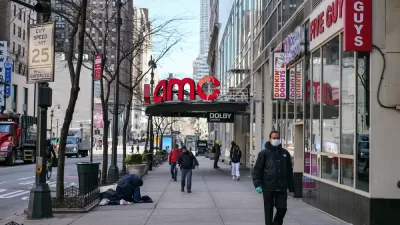Second in a series of conversations about what comes next in local government policies and processes, this time between Geoff Koski and Ben Brown on housing, retail, and broadband

Koski advises to real estate pros, governments, and non-profits on real estate and economic development-related issues. Brown asks a series of pandemic-related questions, starting with:
Ben Brown: There’s no getting around the cloud of uncertainty that will continue to frustrate planning efforts for the next few months. But that doesn’t mean those responsible for making and implementing policies, whether we’re talking leaders in government or business, can get away with doing nothing. Doing nothing is policy by default. So acknowledging all that, what are you encouraging your clients to think about right now?
Geoff Koski: Whether we’re talking about housing or retail or office space, I think the overarching impact of the pandemic and the Great Lockdown is that they will be trend accelerators. The need for innovative affordable housing answers, retail increasingly moving online, the death of distance in the logistics field, the work-from-home shift — all of these things were real and happening at the beginning of 2020. And they’ve only become more apparent and happening faster now.
BB: “Death of distance in the logistics field”? Explain more about that.
GK: We’re growing slower as a population and moving less. We’re having fewer kids. Suburban school districts are telling us that they aren’t seeing the student-to-new-home ratio that they experienced in the past. Remote working has already had effects on intra-national migration for employment, and it seems likely the pandemic and the lockdown experience for both workers and employers will only increase reliance on technology to shrink distances.
The two go on discuss to things city planners should consider within pandemic-driven trends.
FULL STORY: Lessons from the Pandemic: Housing, Retail, Broadband

Planetizen Federal Action Tracker
A weekly monitor of how Trump’s orders and actions are impacting planners and planning in America.

San Francisco's School District Spent $105M To Build Affordable Housing for Teachers — And That's Just the Beginning
SFUSD joins a growing list of school districts using their land holdings to address housing affordability challenges faced by their own employees.

The Tiny, Adorable $7,000 Car Turning Japan Onto EVs
The single seat Mibot charges from a regular plug as quickly as an iPad, and is about half the price of an average EV.

With Protected Lanes, 460% More People Commute by Bike
For those needing more ammo, more data proving what we already knew is here.

In More Metros Than You’d Think, Suburbs are Now More Expensive Than the City
If you're moving to the burbs to save on square footage, data shows you should think again.

The States Losing Rural Delivery Rooms at an Alarming Pace
In some states, as few as 9% of rural hospitals still deliver babies. As a result, rising pre-term births, no adequate pre-term care and "harrowing" close calls are a growing reality.
Urban Design for Planners 1: Software Tools
This six-course series explores essential urban design concepts using open source software and equips planners with the tools they need to participate fully in the urban design process.
Planning for Universal Design
Learn the tools for implementing Universal Design in planning regulations.
Smith Gee Studio
City of Charlotte
City of Camden Redevelopment Agency
City of Astoria
Transportation Research & Education Center (TREC) at Portland State University
US High Speed Rail Association
City of Camden Redevelopment Agency
Municipality of Princeton (NJ)





























